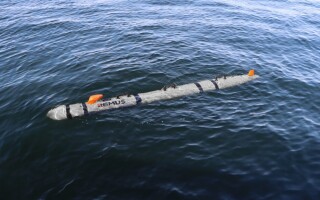Honey, I shrunk the data center
StoryJune 01, 2012
High-speed data throughput and faster interboard communications in a rugged form factor - InfiniBand-on-VPX enters ISR.
Why are defense chip and board developers turning to the InfiniBand switched fabric interconnect technology? Though blazing fast, InfiniBand is neither new nor widely used in Department of Defense (DoD) weapons and platforms. But a new InfiniBand-on-VPX paradigm is coming to high-performance embedded computing to meet the needs of Intelligence, Surveillance, and Reconnaissance (ISR) and similar demanding applications.
Advantage of InfiniBand
InfiniBand provides high-speed, point-to-point bidirectional serial links between fabric nodes. The reason it is becoming attractive in high-performance embedded computing is because of InfiniBand’s market penetration into platforms such as the top 500 high-performance computing clusters, large data centers, market trading floors, and cloud computing environments.
In fact, according to a press release from the InfiniBand Trade Association late last year, 42 percent of the world’s most powerful computers listed at www.top500.org use InfiniBand. The number of cores connected via InfiniBand has increased 24 percent year on year. These platforms, some of which comprise tens of thousands of Intel and NVIDIA processors, have driven the development of extremely robust software support at the operating system, middleware, and driver levels.
VPX and InfiniBand
Developers are also combining InfiniBand with VPX, a point-to-point serial backplane interconnect that is the migration path for VME. VPX shares form factors with VME but has many advantages over the workhorse parallel bus used in many embedded military and aerospace applications. VPX offers at least an order of magnitude increase in data rates over VME. Although each VPX link sends only a few bits at a time, the data rate is so high that card-to-card transfers can reach more than 100 GBps. Additionally, multiple receivers and transmitters can communicate at the same time.
VPX is a multiplane technology that allows data crunching, expansion, control, management, and utility tasks to be executed separately and simultaneously on their respective planes, improving overall speed and efficiency. VPX is also agnostic to physical protocols, making it highly flexible. For example, on the data plane, designers can implement InfiniBand, 10 GbE, PCI Express, or Serial RapidIO. VPX is flexible, offering a wide range of possible architectures. Indeed, so wide is the possible range of architectures that VITA, the VME trade association, has formed an umbrella OpenVPX (VITA 65) working group to develop a set of standard backplane topologies to facilitate the development of modular open-system architectures.
Ripe ecosystem
The InfiniBand software ecosystem, there for the taking, begs to be used by the high-performance applications typical of many military and aerospace projects. It correlates directly with the DoD’s need, now more than ever, to exploit commercial development, minimize costs, and protect existing investments.
Driving adoption are data-hungry but space-constrained applications in areas such as ISR, signals intelligence, electronic warfare, and communications. For example, relatively small packages on drones are expected to crunch floods of data from front-end sensors and provide actionable information in real time. To do that, they need not only higher data throughput but higher interboard communications, for which InfiniBand-on-VPX offers an attractive solution. Drones are just one potential platform. Others include aircraft, submarine, and satellite sensors where high speed and bandwidth are needed but real estate is scarce.
Ready for prime time
A number of embedded computing developers are working on InfiniBand/VPX products in combination with Intel’s latest Core i7 products. A case in point is the SBC625 from GE Intelligent Platforms, a 6U VPX board using Intel’s 2.3 GHz Core i7-3615QE processor (Figure 1).
Figure 1: The SBC625 from GE Intelligent Platforms, a 6U VPX board using Intel’s 2.3 GHz Core i7-3615QE processor.
(Click graphic to zoom by 1.9x)
InfiniBand is optimized for very high-throughput, low-latency data traffic. It fits well with multicore processors and supports Remote Direct Memory Access (RDMA), General-Purpose Computing on Graphics Processing Units (GPGPU), and Open Fabrics Enterprise Distribution (OFED) open-source software, among other advantages.
According to the InfiniBand Trade Association, OFED adoption and deployment are increasing, largely because it helps RDMA-based networks provide computing efficiencies as high as 96 percent and latencies as low as 1 microsecond, as well as reducing data center power consumption by up to 50 percent.
The bottom line is that InfiniBand with VPX brings together the software created for high-performance supercomputers in a rugged, backward-compatible format, creating a powerful synergy for defense and aerospace applications.
Contact Charlotte at [email protected].






